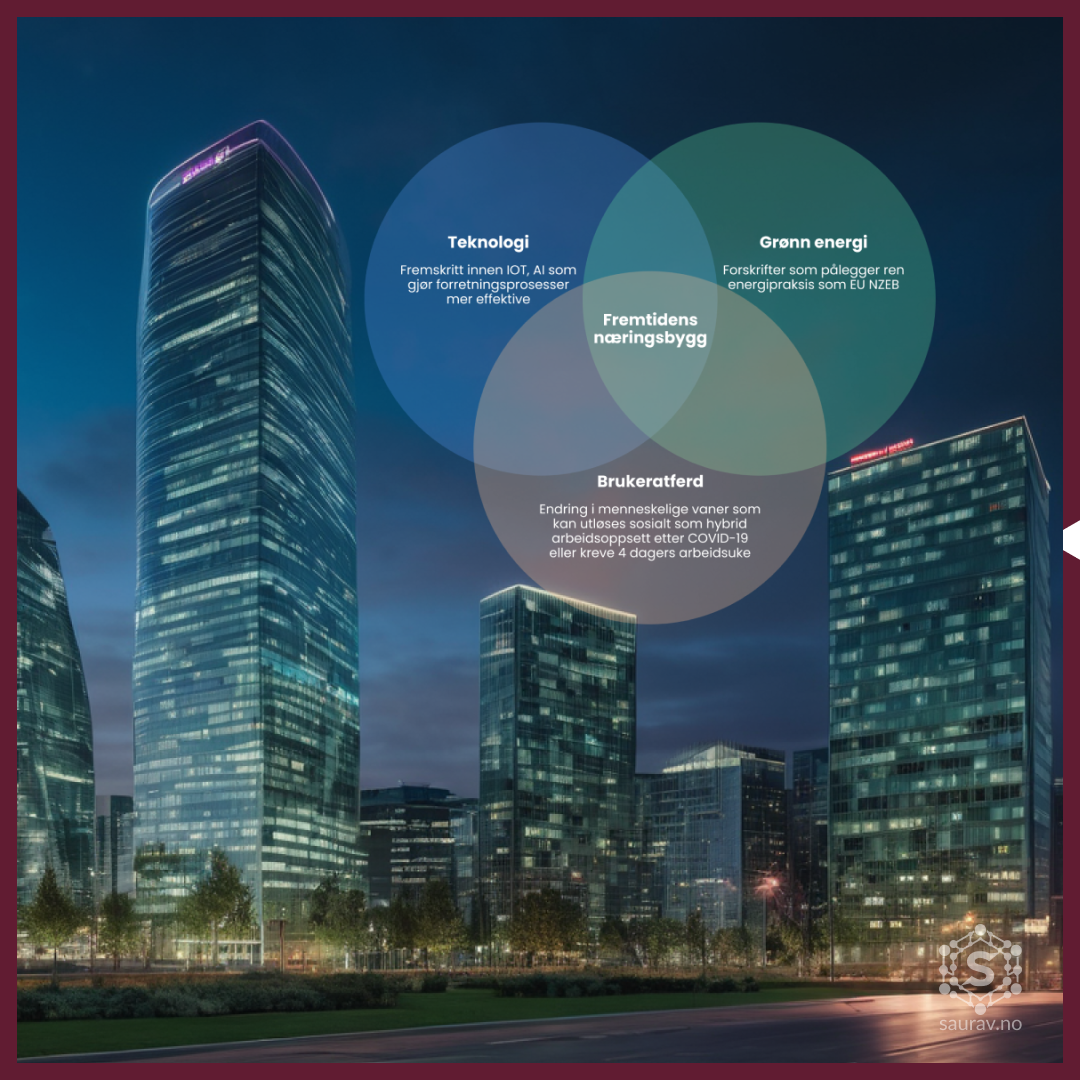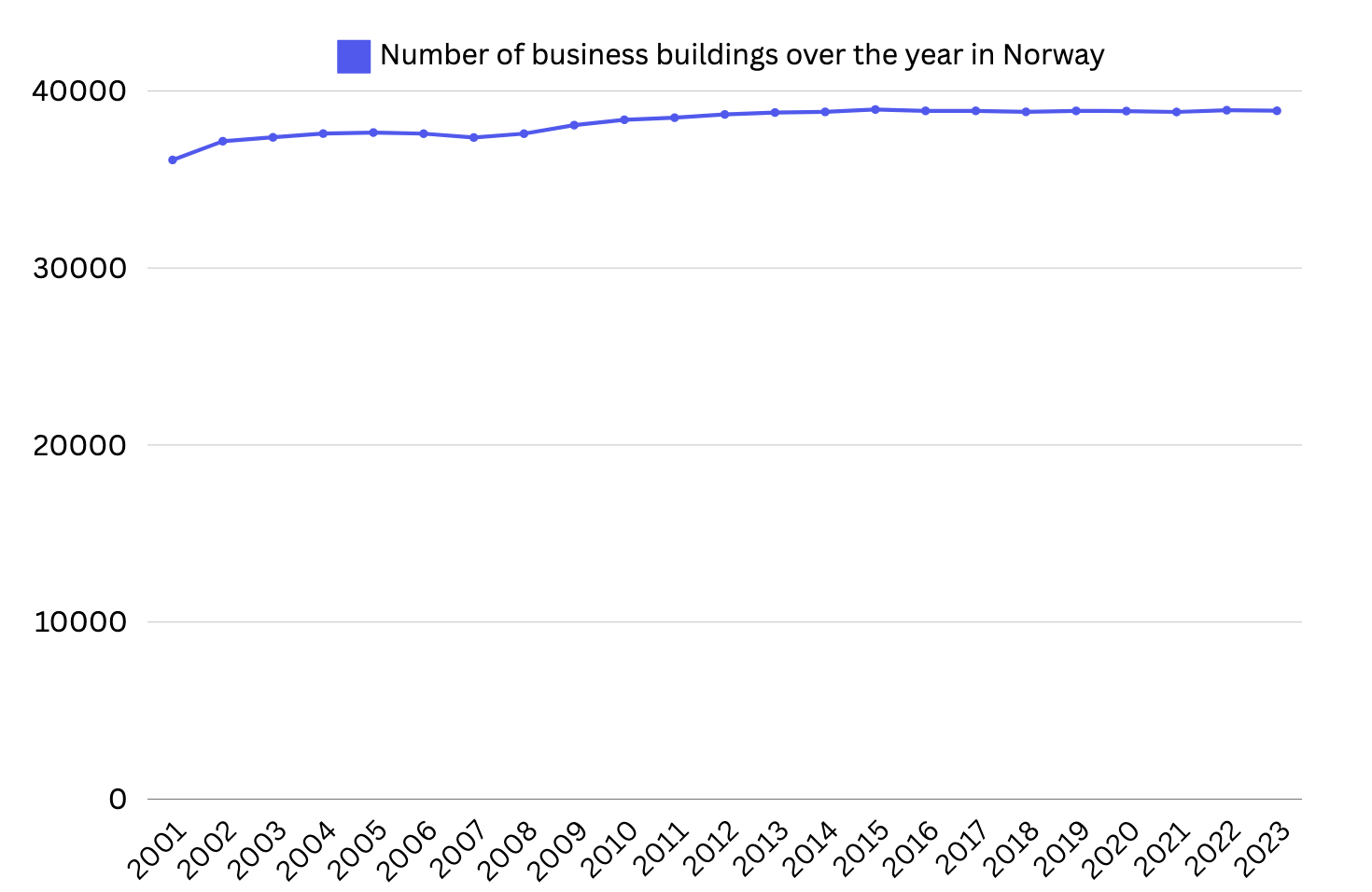
Over the past two decades, only 1,501 new offices and business buildings have emerged in the Norwegian market. I was surprised to find this number to be so low. In an era of rapid technological advancement one might expect a boom in commercial construction but this stagnant growth seemed as an anomaly compelling me to dive deeper into finding underlying factors.
Spoiler: Myself being from a tech background, I suspected technology, or the lack of it, played a significant role in this slowdown. But a different story unfolded as I delved deeper.
 Source: Statistisk sentralbyra ssb.no
Source: Statistisk sentralbyra ssb.no
Regulations
Firstly, Norway’s strict regulatory framework prioritizes sustainability and energy efficiency. All new commercial buildings must adhere to rigorous standards under Technical Regulations (TEK17) which aligns with EU Regulations that aim to achieve fully decarbonised buildings by 2050. Given that buildings account for about 40% of all energy consumption in the EU, it has become a highly regulated space. From 1 Jan, 2027 all new buildings occupied or owned by public authorities should be NZEB (Nearly zero-energy buildings) standards.
This shift introduces the concept of ‘brown discount’, a decrease in demand from tenants due to non-compliance with green regulations, which might be contributing to this stagnation in growth rate. Energy efficiency touches all of the aspects of a building ecosystem. From how eco-friendly the building is constructed to how efficiently building managers maintain it. From how streamlined service providers deliver their service within a building to how responsibly the tenant consumes those services. Everything matters. Izy, our Facility management solution, creates an ecosystem such that it brings all these parties to one platform where we have one place to manage every aspect of commercial building saving time and resources. In addition to that, prediction platform helps to make data backed decisions on future sales to manage the supply chain accordingly. In this way clean operation with green energy heavily weighs how the future of a commercial property in Norway will be.
 Source: Data from Izy Platform
Source: Data from Izy Platform
Technology
Then comes Technology. Norway’s adoption rate of electric vehicles (EVs), which stood at 82.4% of all new passenger car sales in Norway in 2023 underscores national affinity towards technology and innovation. Smart homes and smart buildings have become the core of Norwegian culture. At Izy, we are advancing this with mAIfood, a smart lunch ordering system powered by computer vision (AI). The future also depends on how facility management platforms can integrate LLMs and other Generative AI applications to enhance tenant experiences.
Changing User Behaviour
Finally, how the post-pandemic work culture has been moving towards work from home (WFH) or hybrid work with already existing greater work-life balance adds the challenge of user retention that service providers need to take into account. Honestly, There are not a lot of us who would want to sit in our office spaces on a bright sunny day which is already scarce in Scandinavia after a long winter. I recall discussing the idea that a good tech platform should enable users to form healthy lifestyles. Rather than having a virtual meeting, once in a while, why not book a kayak to sail along the water and discuss the ideas to shape the future. How we can enhance the user experience respecting these social aspects greatly affects the future of commercial buildings.

As we think about these insights, my opinion is that the future of commercial real estate in Norway will be shaped by three pivotal forces: green energy, technology, and shifting consumer behaviors. Technology along with enhancing building operations also influences tenant expectations. With increasing concerns of climate actions, the source of energy to fuel the innovating technology is equally important. And tenant behavior is often driven by technology. I think the future for commercial real estate lies somewhere between the triad of Technology, Green Energy revolution, and shift in user behavior as consumers of the services.
If you enjoy staying updated on technology, business, and the universe, feel free to read me on Substack.